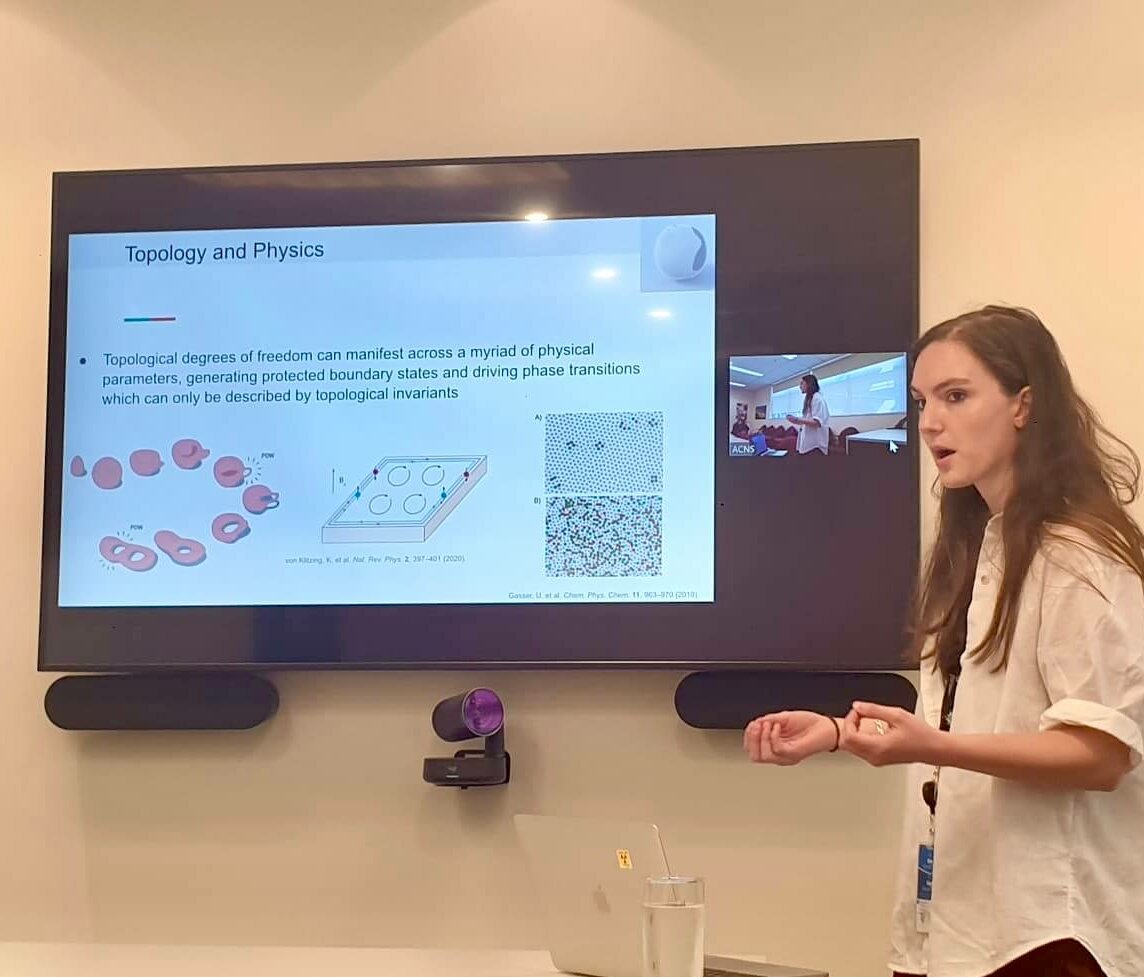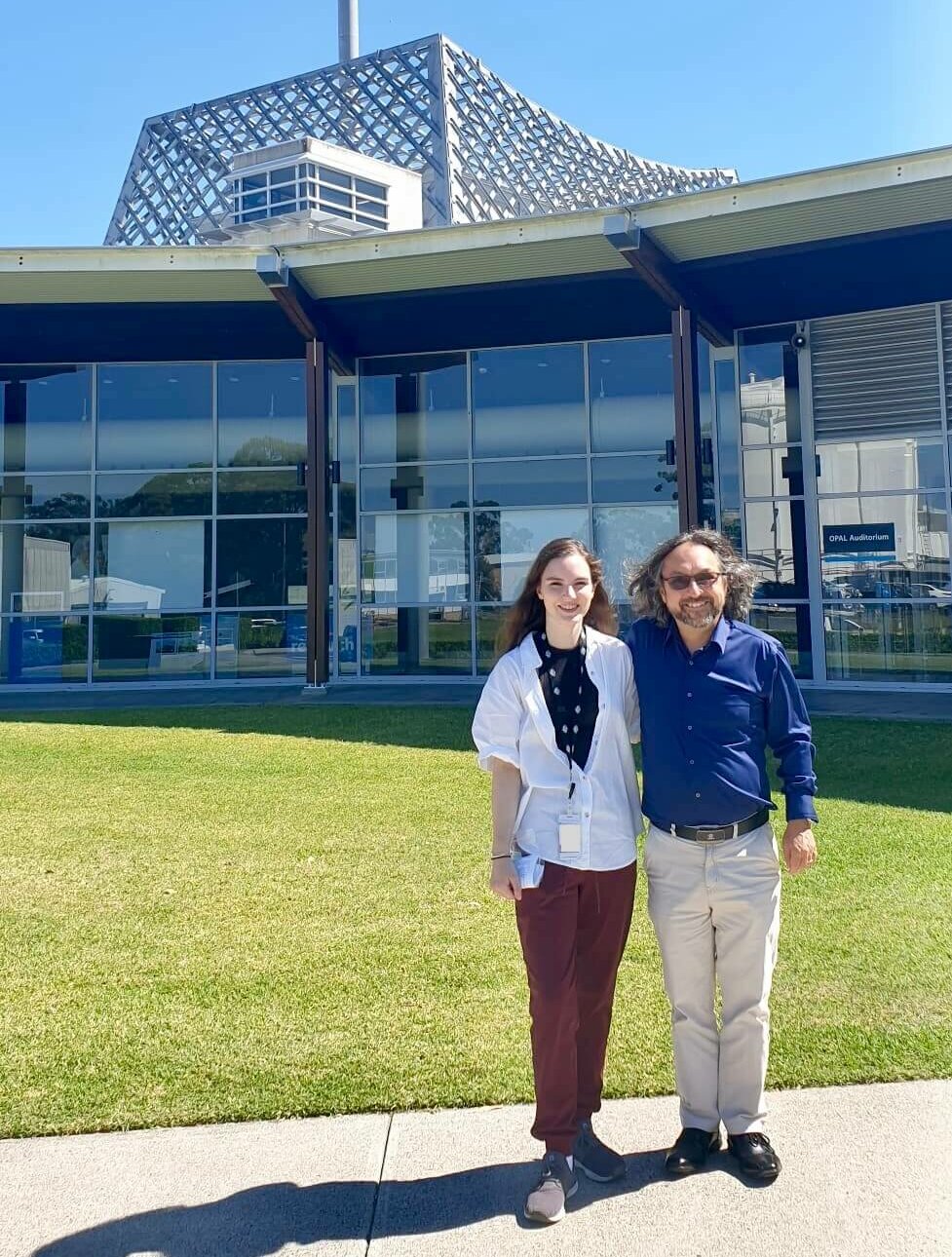TQT-supported graduate student furthers neutron-based quantum material research with visit to Australia
Melissa Henderson, a Ph.D. student at the Institute for Quantum Computing supervised by Dr. Dmitry Pushin, visited the Australian Nuclear Science and Technology Organisation (ANSTO) to perform a small-angle neutron scattering (SANS) tomography experiment and present a seminar.

Henderson presented a talk titled “Visualizing Skyrmion Topological Transition Pathways via Three-Dimensional Neutron Tomography” to an audience of ANSTO staff and professors at neighbouring universities, including the University of Sydney and the University of New South Wales. The seminar covered the development and implementation of a compact vector magnet with a closed-cycle refrigerator (CCR) inspired by a low-field rotating magnet + CCR design built at the NIST Center for Neutron Research by Henderson and her colleagues Shannon Watson and Wangchun Chen. This magnet was developed to reduce the bulky setups and demand for frequent Helium refills associated with cryomagnet sample environments typically used for studies of skyrmion reorientation/ordering dynamics and additional topological magnetic structures which operate in the intermediate field regime. Her talk further detailed her team’s success in applying small-angle neutron-scattering (SANS) techniques to uncover the first three-dimensional visualizations of skyrmion topological transition and reorientation pathways.
To further investigate bulk skyrmion phase/lattice transitions and their ordering responses, Henderson required neutrons that penetrate the depth of the material; ANSTO is one of a handful of research centres in the world with the necessary instrumentation, sample environment, and neutron fluxes needed to execute these type of experiments. By applying techniques developed at UW with the resources available at ANSTO, such as the Quokka beamline and a 10T horizontal field cryomagnet, the experiments provided unprecedented access to three-dimensional topological states and their dynamics.

This visit was a first step in facilitating collaborations with instrument scientists at ANSTO and enabling the implementation of UW techniques across various instruments and sample environments, aiding in the widespread application of these techniques as pioneering neutron-based quantum material probes. “One of the highlights of my role at ANSTO is working with talented researchers on a range of complex materials while recognizing how to exploit the unique opportunities for neutron scattering,” says Professor Elliot Gilbert, a senior principal research scientist for the Quokka SANS instrument. “It was terrific working with Melissa, who not only synthesizes samples of unquestionably high quality but also possesses a deep understanding of the physics of her system. I look forward to seeing her during her next scattering campaign to push even more detailed data from our facilities and specialized sample environments.”
The visit inspired progress in developing a 3D vector magnet spanning temperature ranges of 5 K – 700 K and field ranges of 0 – 2 T. This would enable an entirely new subset of experiments to be performed over large angular, temperature, and field ranges, with more versatility/tunability in temperature/field dynamics, and the capability to probe more disordered states with short correlation lengths tomographically. “The influence of thermal history is enormously important in manipulating and ultimately controlling the phase behaviour of skyrmions and the extent to which they can be deployed for technology,” says Gilbert.

Melissa is grateful she could advance her research in a place where she had the freedom and support to perform unique and novel experiments that push the frontiers of science. “This support spanned numerous departments, from instrument scientists to machinists and engineers. The willingness of these teams to develop new tools/equipment and explore new scientific regimes enabled the collection of fascinating and exotic data. Moreover, their proactivity and versatility in tailoring their equipment to the needs of their users such as myself facilitates an infrastructure and environment that promotes pioneering research.”
